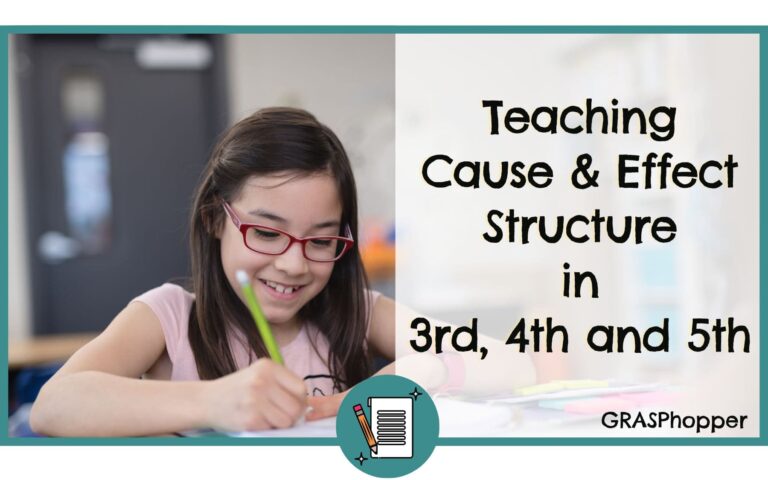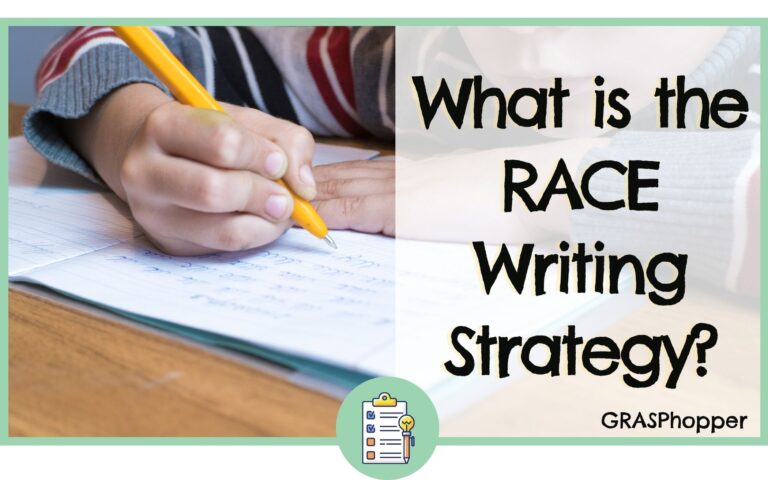When you try to teach your students how to summarize a text, do you suddenly feel like you are speaking a foreign language and they just have no clue what you are telling them to do?
You aren’t alone-summarizing is actually one of the most difficult concepts to teach in writing, especially in 3rd, 4th and 5th grade.
Now make it a nonfiction text instead of fiction and it can feel like it’s our end game (Taylor Swift pun intended).
Don’t worry! We’ve got your back and are going to share 4 simple steps to teach students when summarizing nonfiction text.
Let’s dive right in!

Characteristics of a Nonfiction or Informational Summary
A summary is a simple overview or outline of what the text is about.
As we said, summarizing an informational or nonfiction text can be really difficult for students.
Why is that exactly?
Let’s think about all of the steps for writing a summary:
- Students need to be able to identify important ideas in the text including the author’s purpose.
- They also need to identify the main idea and supporting details.
- In order to write a summary, they actually have to be able to write complete sentences and have their ideas make sense.
- Finally, they are supposed to paraphrase what they learned in their own words and not copy the ideas verbatim from the text.
Look at all of the intense writing skills that make up the art of summarizing! It’s probably a good thing that we don’t teach this skill until upper elementary!
If your students are already struggling to write complete sentences or just find the main idea of a passage, they are absolutely going to need some major hand-holding when writing a summary for a nonfiction text.
How to Teach Summarizing a Nonfiction Text in 4 Simple Steps
Now that we have looked at all of the characteristics and skills that writers need to have to be able to summarize, let’s start summarizing!
Here are 4 simple steps for how to teach your students to summarize:

Step 1: Read the Text
Obviously this seems simple but it’s more than that. Teach students to slowly read each paragraph. In addition, have them look at all of the text features including the title, pictures and captions.
Step 2: Underline Keywords
After reading the nonfiction text carefully, have students take a highliter or colored pencil and underline the most important words. Explain the importance of picking information that supports the main idea.
Step 3: Figure Out the Main Idea
Now, have students use these keywords that they just underlined to help them understand the author’s purpose and the point they are trying to make. They should be able to understand the main idea of the text this way. We encourage students to do this for each part of the text.
Step 4: Write the Summary (Use the TAMS Method)
Finally, teach students to use their own words when summarizing and not directly copy from the text. It is also important to remind them that when they summarize they are not stating their opinion. They have to use real facts from the text.
Use the TAMS method when teaching students to summarize. Once you teach students this method, you will not continue to get summaries turned in that are simply words just copied straight out of the text or full of students’ opinions. We teach students that summaries should be short and be about 4 to 5 sentences total.
Here’s the TAMS method and how we teach students to write a well-written summary of a nonfiction text:
T- Text
Start by stating what type of text it is in the summary.
For example: is it a passage, article, recipe, etc?
A- Action & About
Then teach students to add purpose into the summary to state what the nonfiction text is about.
For example: This recipe (text) describes (action) how to make blueberry pancakes (about).
M- Main Idea
Next, have students state one main that they learned from the nonfiction text.
S- Supporting Detail
Teach them to back up their main idea as we always do with a supporting detail from the text in their summary. We teach them to write 2-3 supporting detail sentences in there summary, keeping the summary no more than 5 sentence total.
Using this simple strategy for writing a summary of a nonfiction text is a total game changer! Use the Summarizing Nonfiction Text Worksheets Graphic Organizers Practice Activities with your students and we can pretty much promise they will become total experts at summarizing!
This resource explains the TAMS strategy in much more detail and contains tons of practice activities with easy to follow steps to hep students write a summary.
Summarizing Nonfiction Text Graphic Organizer & Anchor Charts
You can find everything that you need to teach students how to summarize informational or nonfiction texts in the Summarizing Nonfiction Text Activities.
It includes:
- Anchor charts
- Graphic organizers
- Checklists
- 1 entire month of summarizing low-prep activities
- Differentiated options for ESL learners or students in special education
- High-interest text that is engaging for students
and so much MORE!
What other tips do you have for teaching your students strategies for summarizing a nonfiction text?











